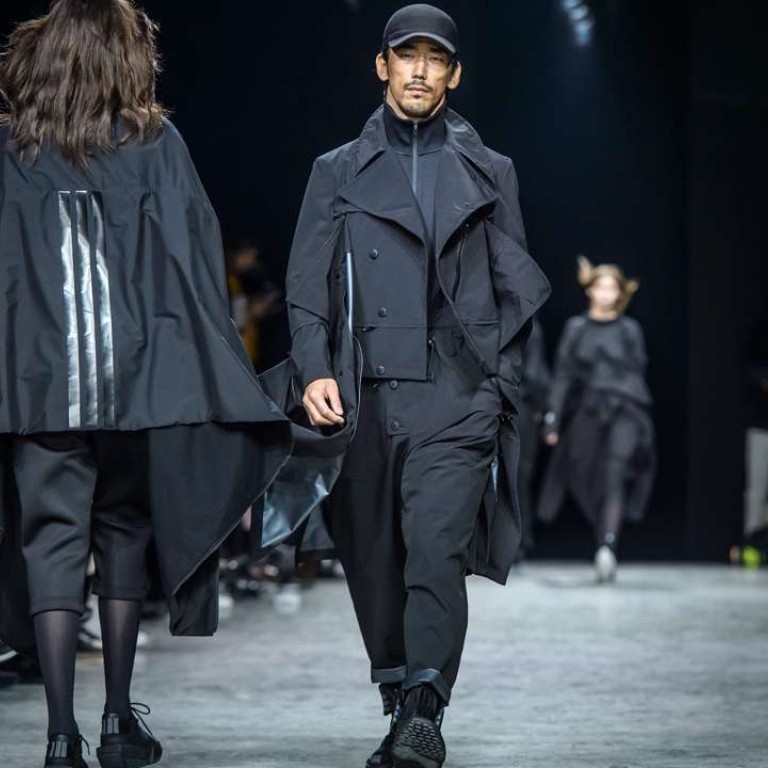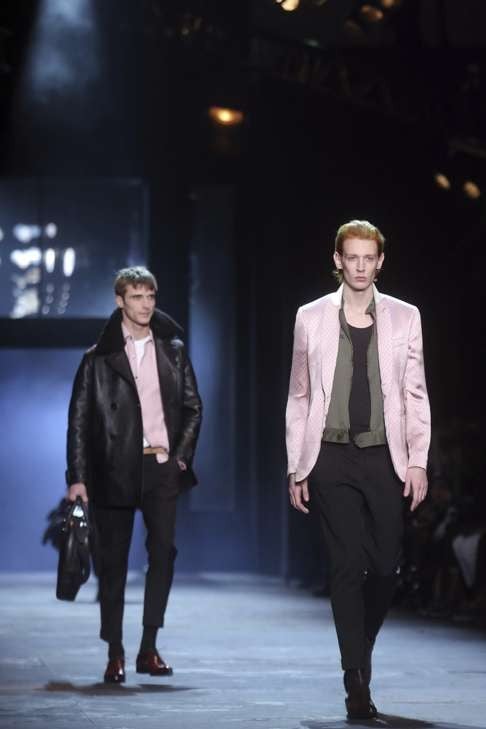
Paris Fashion Week outfits for men reveal designers prepared to take a stand
Balenciaga’s Demna Gvasalia couldn’t resist a statement as Donald Trump is sworn in as US president and others such as Lanvin, Lemaire, Kenzo and Junya Watanabe reflected on the rat race and environmental issues
The men’s autumn/winter 2017 collections for Paris Fashion Week displayed a new eclecticism featuring social and political statements.
Balenciaga’s artistic director Demna Gvasalia unveiled a corporate-casual menswear collection that reinterpreted Democratic presidential hopeful Bernie Sanders’ campaign logo on the eve of Donald Trump’s inauguration.

Closing the Paris men’s fashion week on an intellectual note, Carol Lim and Umberto Leon, the designer-duo behind Kenzo, aimed at environmental causes with nature-related prints – think Arctic glaciers, Hawaiian florals and aurora borealis dégradés – on heavily layered, matelassed and cocooned men’s silhouettes.

Labels such as Lemaire, Berluti, Balmain and Ami stood out for expressing the importance of taking things slowly through optimistic, romance-infused informal menswear that boasted elegant and easy-fitted silhouettes and intricate embroideries. A rustic colour palette included flashes of blue and pink.

Riccardo Tisci’s outing for Givenchy was equally personal and intimate. Tisci used Western American references from his childhood to reinterpret the brand’s signature styles – colourful geometric prints, horizontal stripes, stars and embroidered check patterns – and to design what he called “a positive Givenchy collection”.

High fashion brands such as Juun J, Sacai, and Boris Bidjan Saberi, as well as Yosuke Aizawa’s White Mountaineering and Yohji Yamamato’s Y-3 offered a new take on functional outdoor clothing. Juun J opted for a reinterpretation of the brand’s best utilitarian looks from the past 10 years with street-flavoured and military inspired pieces, while Sacai explored the “unreasoned gesture of a cut”.


Celebrating youth culture, and marking his 10th anniversary with Dior Homme, artistic director Kris Van Assche drew on the hardcore rave and punk cultures of the late 80s and 90s. A statement, namely ‘HARDIOR’, was emblazoned on an urban wardrobe of neatly tailored suitings and wide and oversize pants, tops and jackets in pinstripe and flashes of bright colour.
Dries Van Noten collaborated with textile companies by printing their logos on patches for slouchy yet sophisticated pieces. The Belgian designer surprised by dropping his richly textured and decorated menswear archetype in favour of street-cred looks with hard edges and strong lines.
